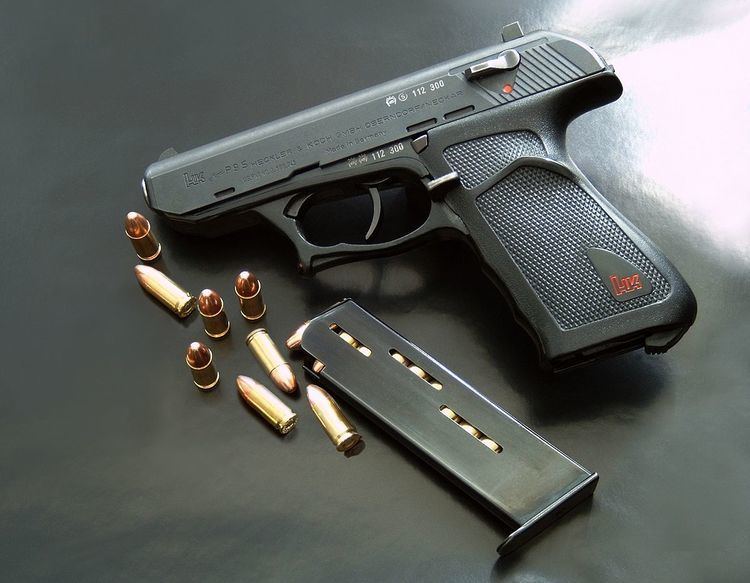In service 1969-present Designer Heckler & Koch Gmbh | Used by See Users Designed 1965—1969 | |
 | ||
The HK P9 is a semi-automatic pistol from Heckler & Koch in 9×19mm Parabellum and the first to use a variation of H&K's roller delayed blowback system in a pistol format and polygonal rifling now common in H&K designs. Design began around 1965 and production ran between 1969 and 1978. Only 485 single-action P9's were produced and were discontinued in 1970. A traditional double action version, the P9S (the S standing for Spannabzug, or "double-action trigger") was manufactured in greater numbers.
Contents
Overview
The P9 is a roller-delayed pistol manufactured from a stamped steel main frame and a polymer trigger guard. The stamped steel slide contains machined internal parts including a polygonally rifled barrel. High-profile fixed sights are fitted with two red rectangles on the rear sight and a white stripe on the drift adjustable front blade sight. Vertical zeroing is accomplished by fitting front sights of a different height.
The P9S was adopted by the US Navy for use with a sound suppressor. The sound suppressors of the period were comparatively large and the model frequently shown with the P9S make the pistol's sights unusable so the suppressor was equipped with sights. The fixed barrel of the P9S allows the pistol to operate reliably with the suppressor attached without requiring the recoil booster. Most long and short recoil designs need to compensate for the added muzzle mass and mechanical movement of a mounted suppressor.
A shortened version, the P9K (the K standing for Kurz, or "short") was made in prototype form, but was never put into production.
In addition to the standard P9S, a P9S Target model was also offered. This model included a taller front sight, a windage and elevation adjustable rear sight, an adjustable trigger over-travel stop, and an adjustable trigger that could be adjusted down to as low as approximately a 2.5# pull. The P9S Target model was offered in both 9mm as well as .45 ACP.
Design
The P9S trigger operates as a traditional double action. There is a lever on the left side of the pistol grip to both decock a cocked hammer or to manually re-cock it for a single action first shot, a feature first observed on the Sauer 38H. A further function of the decocking lever is to release the slide stop. The hammer is concealed within the slide (also similar to the Sauer) with a protruding pin at the rear of the slide as a cocking indicator. The operating spring surrounds the barrel, allowing for a lower bore axis than pistols such as John Browning's M1911 that have the operating spring below the barrel. A manual firing-pin safety is located at the left rear of the slide; putting it in the down position locks the firing pin and flipping it up to level position unlocks it.
Typical to European pistols, the magazine release is heel-mounted. The magazine is single column.
